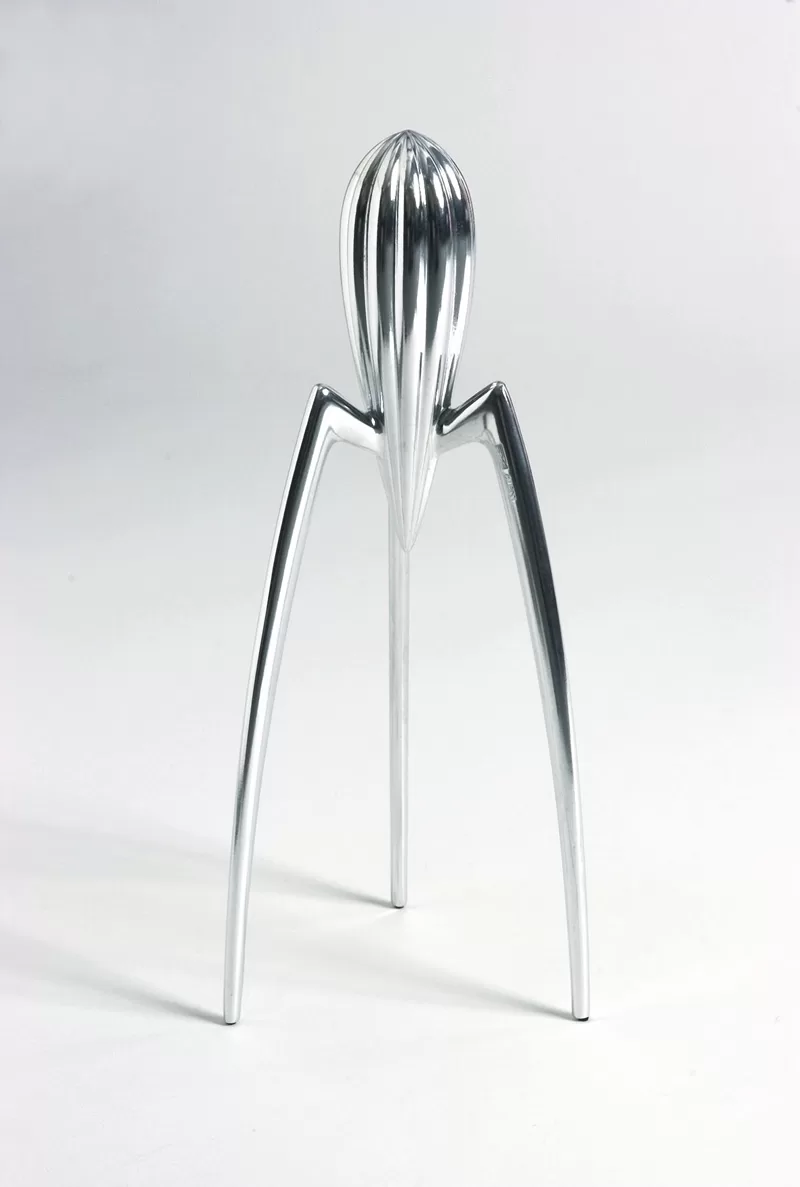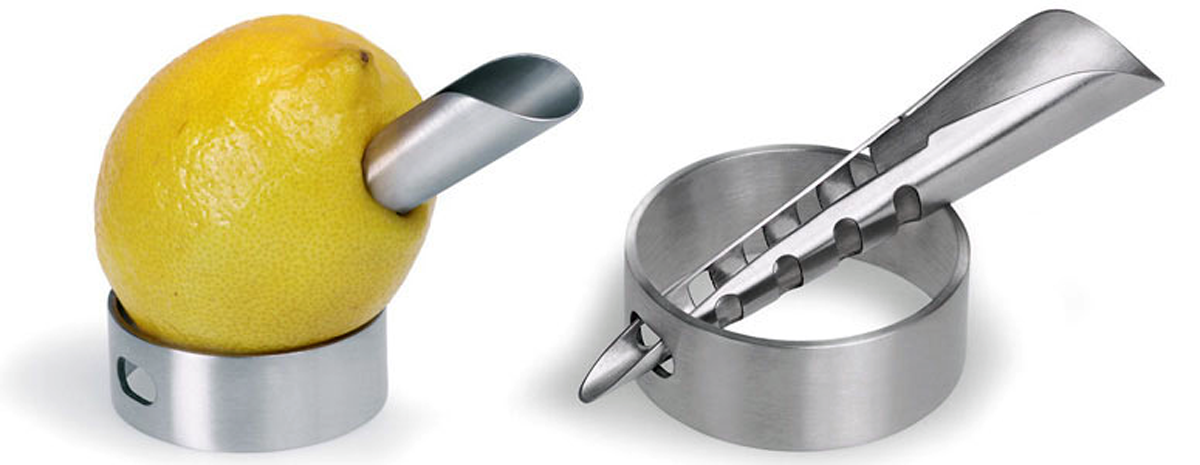
We all use them in cooking in various ways, some I hear even use them in cleaning, but the humble lemon has over the years made an impact from a design perspective. Not all squeezers are actually meant to squeeze. Perhaps the most famous example of this is the Juicy Salif, designed by Philippe Starck in 1990. It is considered an icon of industrial design that has been displayed in New York’s Museum of Modern Art.
It is manufactured by Italian kitchenware company Alessi. Its diameter is 14 cm, height 29 cm, and it is made from cast and polished aluminium. As the founder of the company Alberto Alessi recalls “I received a napkin from Starck, on it among some incomprehensible marks (tomato sauce, in all likelihood) there were some sketches including sketches of squid. They started on the left, and as they worked their way over to the right, they took on the unmistakable shape of what was to become the juicy salif. While eating a dish of squid and squeezing a lemon over it, Starck drew on the napkin his famous lemon squeezer.”
In 2007 German designer Nicole Schaeffert invented the Blomus Utilo, a simple, yet elegant device allows you to squeeze without getting sprayed.
But perhaps my favorite juicer (for all the wrong reasons) was this impressive piece of public art displayed in Canberra last year. It caused quite a stir amongst design bloggers at the time, the best I could find was “It has been said that for art to be good it needs to give the viewer a reaction. Looks like it is doing that very well. I would not call the person who made this an artist though as it looks like it has been made by a designer. An artist creates from the soul, a designer creates from the head.”
However the final and perhaps the best word, goes to the man himself. Starck said in an interview once “it’s not meant to squeeze lemons, its designed to start conversations”
Do you agree – try and squeeze out a comment on your view of this (sorry!)







































